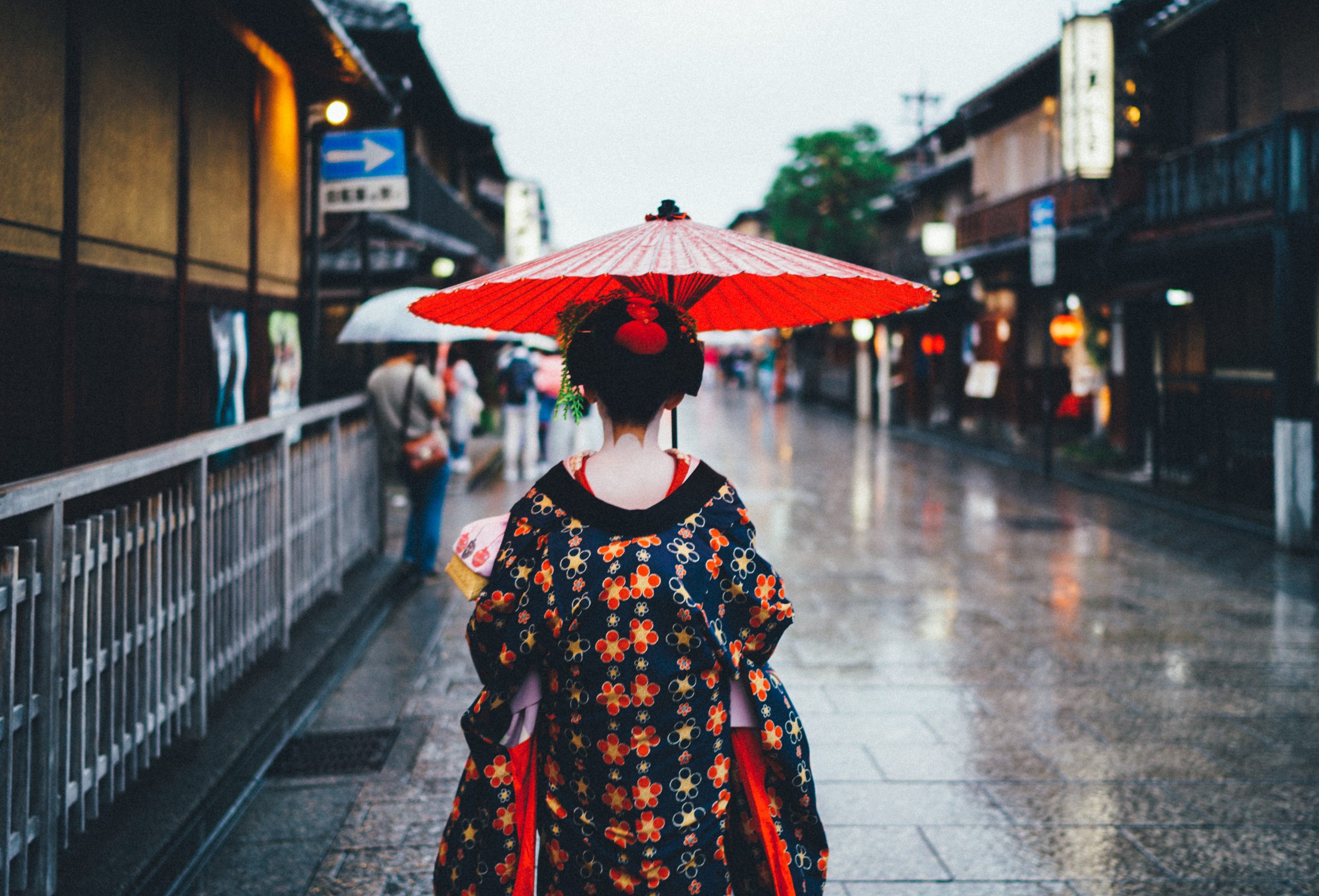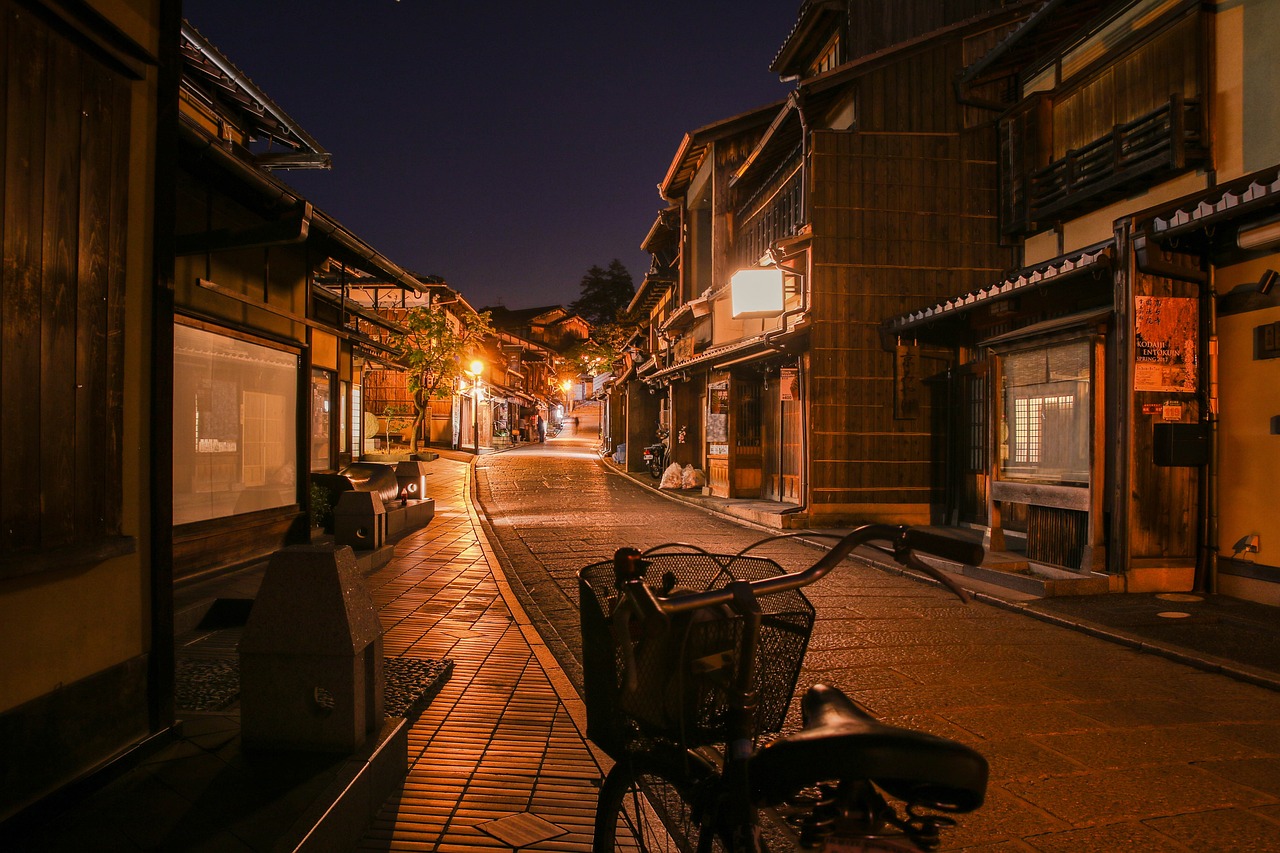
Are you interested in visiting teahouses in Kyoto, such as “I want to visit a teahouse in Kyoto?” or “Why do teahouses in Kyoto not allow first-time visitors?” but you may be wondering about these questions.
In conclusion, even foreigners can enjoy visiting teahouses in Kyoto. In this article, you can learn more about the etiquette for enjoying a teahouse experience in Kyoto, as well as the history and culture of Kyoto. We also have information on how you can experience playing in a tea house while sightseeing, so please take a look.
■What are Maiko and Geiko?

Maiko refers to women between the ages of 15 and 20 who are apprentices to geisha and who perform dance, music, and other techniques to entertain guests at banquets. Their elegant appearance is impressive, as they wear tall geta called okobo and wear powdered powder on their faces and gorgeous kimonos.
On the other hand, a geisha is a full-fledged woman over the age of 20 who has mastered all aspects of tatami-style behavior such as dance, shamisen, ohayashi, singing, tea ceremony, and etiquette. Compared to Maiko, they wear chic kimono and have a calm atmosphere.
Until you become a full-fledged geisha, you must pass an interview with the proprietress of an okiya (similar to a talent agency). After passing the exam, you will become a full-fledged geisha through training to become a maiko and training to change from maiko to geisha.
■The history of playing in teahouses in Kyoto

Kyoto’s teahouse activities began about 300 years ago during the Edo period.
It is said that this tradition began at the Mizuchaya in the temple town of Kitano Tenmangu Shrine and Yasaka Shrine, where they served tea and dango to worshipers. They also performed songs, dances, and other tricks to attract customers, and the maiko industry began when girls as young as 10 years old performed the dances.
With the passage of time, tea changed to alcohol, and the current style of hospitality, which included songs and dance, evolved. Let’s dig into teahouses that are steeped in Kyoto’s tradition and culture.
It takes more than 6 years for a maiko to become a full-fledged maiko.
To become a full-fledged geisha from a maiko, follow the following three steps.
1. Apprenticeship: This is the stage before becoming a maiko, and involves learning the language and etiquette of Kyoto’s red-light district for about 10 months.
2. Season: The period of training to become a geisha. In addition to dance, she spent about five years learning shamisen, hayashi, singing, and tea ceremony.
3. Independence: If she gets permission from the landlady, she can become a full-fledged geisha and become independent.
If she can earn a high reputation and become a talented geisha, she can earn a high income and continue to work for the rest of her life.
Reason for not accepting first-time visitors
At teahouses in Kyoto, first-time customers are not allowed. The reason for this is the following two points.
● In order to provide maximum hospitality to our customers, we cannot satisfy the first customer.
● Since the landlady pays the bill in advance, customers who do not know their identity cannot pay the bill at a later date.
A tea house is built on a relationship of trust in which the proprietress provides high-quality hospitality to regular customers, and the proprietress pays the high price in advance and settles the bill at a later date. It is because of this style that first-time visitors are not allowed.
■Manners, rules, and fee structure for playing in a teahouse in Kyoto

The teahouses in Kyoto’s red-light district provide the highest level of hospitality through long and deep human relationships. However, of course, there are certain manners that customers who visit teahouses should also follow.
● Photography must be done with respect and within the range that does not make the maiko or geisha uncomfortable.
● Do not touch maikos or geishas.
● Wear formal attire.
Let’s look at them one by one.
Ozashiki play etiquette ①: Be respectful and take photos without making the other person uncomfortable.
Maiko and geiko are used to having their photos taken. However, it is vulgar and rude to constantly take photos while the guests are being treated to hospitality such as drinking alcohol and hanging out at a teahouse, so please refrain from doing so.
Chaya play is a dignified adult game. It is good manners to only take photos as a commemorative photo with the consent of the other person, and to treat each other with consideration and respect.
Etiquette for playing in a tatami room ②: Do not touch the maiko or geiko
Please refrain from touching Maiko and Geiko. Everything that maikos and geikos wear is expensive, and if it comes off or is dropped, it could cause a large amount of damage.
Please avoid not only touching but also vulgar conversations such as listening to private conversations, and behave in a polite, gentlemanly and common sense manner. Be respectful of the best hospitality, enjoy conversation and dance, and be mindful of your elegant behavior.
Manners for playing in a tatami room ③: Dress in formal attire
You don’t have to wear a suit or formal attire, but it is good manners to wear formal attire that is slightly more formal than your casual clothes, clean shoes, and new socks. Loose T-shirts, shorts, sandals, etc. are not allowed, so please be careful not to wear too casual clothes.
What you wear shows how you feel about the other person, so if you want to receive high-quality hospitality, guests should prepare well and wear clothes that won’t embarrass them when they visit.
Price structure for playing in a tea house in Kyoto
The average cost to invite a mai geisha to go to a teahouse in Kyoto is about 50,000 to 90,000 yen. The breakdown of costs is as follows.
● Flower fee: 30,000 to 50,000 yen
● Food and drinks: 10,000 to 20,000 yen
● Banquet payment: 10,000 to 20,000 yen
If we were to invite two maikos and two geishas for a total of four people, the cost would be around 350,000 yen. There is no set price, and you pay a fee commensurate with the hospitality, which is a traditional Kyoto pricing system.
■Introducing games that are fun to play at teahouses in Kyoto

After enjoying traditional performing arts at teahouses in Kyoto’s red-light district, there is an exciting teahouse play where you can play with maikos and geishas. We will introduce the following three representative games.
● Konpira Funefune
● Toratora
● Tosenkyo
Let’s take a look at the game content and rules one by one.
Konpira Funefune
Konpira Funefune (Konpira Funefune) is an ancient folk song about Kotohira Shrine in Kagawa Prefecture, affectionately known as “Konpira-san.”
Facing the maiko and geiko, they place a bowl-like object in the middle on top of Zen and take turns placing their hands on it while singing “Konpira Funefune.” The rule is that if one player takes the bowl, the other player gets a flop, and if they keep it that way, they get a par, and if they make the wrong move, they lose.
Toratora
It is a game with the same rules as modern rock, paper, scissors.
The customer and the maiko (or geisha) both hide behind a folding screen and dress up as a tiger (yotsunbai), an old woman (with a cane), and Kato Kiyomasa (with a spear). They pose at the same time while shouting.
Wins and losses are as follows.
● Watounai is strong against tigers, but weak against old women.
● The tiger is strong against the old woman, but weak against the Watanai.
● The old woman is strong against Watounai, but weak against tigers.
It’s very exciting because both parties move their bodies and perform the Guchokipa while being shy.
Tosenkyo
Tosenkyo uses three tools: a butterfly (target), a pillow (base), and a folding fan (for tosenkyo), and throws the fan toward a target called a butterfly.
Compete for points based on the shape of the game.
The lowest score is the case in Nowaki where the pillow falls over. If the pillow falls over, you will receive -50 points. The one with the highest score is “Yume no Ukibashi”, where the fan is suspended from a pillow and a butterfly that stands on the ground, but is not in contact with the ground, receiving 100 points.
The scores are divided into 55 patterns.
■A shop where even first-timers can have fun

Most of the teahouses in Kyoto’s red-light district do not allow visitors, but we will introduce two shops where you can hang out with maikos and geishas.

https://gion-hayakawa.jp/index.html

Let’s experience a tea shop when sightseeing in Kyoto
We have introduced the history of teahouses in Kyoto and the manners and content when hanging out with maikos and geishas.
By learning how to play in a teahouse in Kyoto, you can experience the good old Kyoto history that Maiko and Geiko have continued to protect. Please come visit our store and experience the teahouse experience.
Q&A
Q: Are there any tea shops in Kyoto where even first-time visitors can hang out with maiko?
A: There are tea shops where even first-timers can play.
These teahouses often offer experience plans rather than actual teahouse activities.
Q: Why are you refusing to accept first glance customers?
A: In order to provide the best hospitality to our customers. This can be said to be a part of good old Japanese culture, as we are able to provide services that truly satisfy our customers who have been with us for many years.

